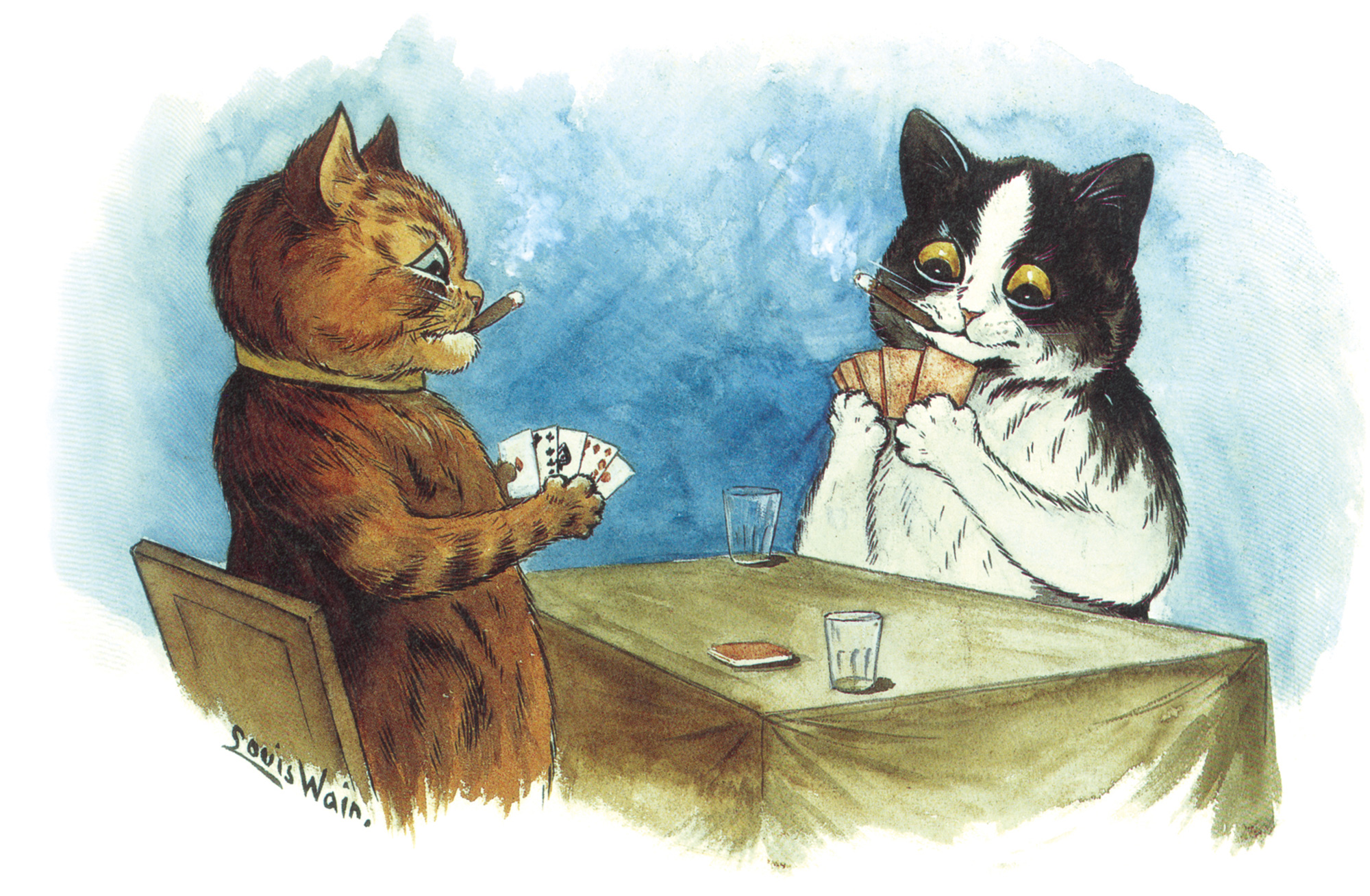Radiantly Malevolent
Louis Wain’s psychotic cats
Adam Jasper

For a brief period at the end of the nineteenth century, Louis Wain was arguably England’s most reproduced artist. Not England’s most lauded artist, certainly—there are no works by him in the National Gallery, for example—but between 1895 and 1905 some forty books illustrated by Wain appeared on the market, alongside hundreds of postcards, miniatures, mementos, and keepsakes. All of them feature the same subject matter: funny cats. Cats playing golf, cats taking photographs, cats in bow ties or doffing bowler hats.
The Louis Wain cat was inquisitive, upper middle class, bright-eyed, and boisterous. He walked upright on his hind legs, wore clothes, used tools, and, although prone to mishaps, had a keen sense of propriety. The Louis Wain cat was not, in short, a cat, but a typically extroverted Edwardian gentleman. “When I was young,” said Wain, “no public man would have dared acknowledge himself a cat enthusiast; now even MPs can do so without danger of being laughed at.”
Wain first achieved notoriety in 1886 with a Christmas supplement to the Illustrated London News, a narrative drawing called “A Kittens’ Christmas Party.” The image took Wain eleven days to draw, featured over two hundred felines, and ran across a full two pages of the newspaper. That it was printed as a spread is significant; everything not pertaining to Wain’s cat tableau was thereby omitted from the page, creating catland as a humane world free of humans, a kind of virtual utopia. H. G. Wells wrote, “He invented a cat style, a cat society, a whole cat world. English cats that do not look like Louis Wain cats are ashamed of themselves.”
The craze for anthropomorphized adorables is not entirely unfamiliar. In its weakness for the cute, the twenty-first century shares characteristics with the end of the nineteenth, and just as a significant proportion of Internet traffic today is devoted to pictures of baby animals, there soon emerged in Edwardian England a veritable industry dedicated to publishing Wain’s anthropomorphized cats. “A Christmas without one of Louis Wain’s clever catty pictures,” Frances Simpson wrote in The Book of the Cat (1903), “would be like a Christmas pudding without currants.” On the strength of his anatomically implausible caricatures, Wain was eventually elected president of England’s National Cat Club.
Wain’s preoccupation with cats had its origin in 1883, when, as a junior commercial illustrator of no particular prominence, he had begun to draw his wife’s pet, a black-and-white kitten called Peter, to amuse her. She had been diagnosed with breast cancer and confined to her bed. Peter became her chief companion, Wain’s muse, and a distraction that culminated in an obsession for the artist. Upon Emily’s death three years after her confinement, Wain allegedly claimed that Peter became the vessel of at least a portion of Emily’s soul.